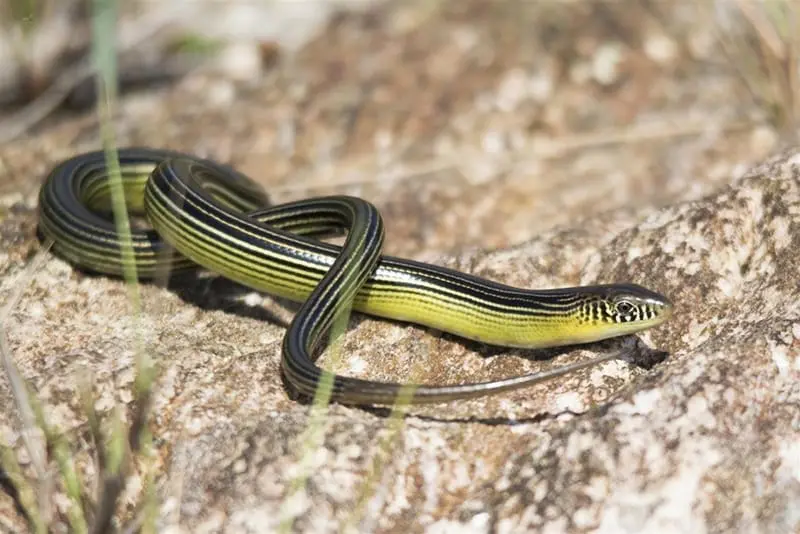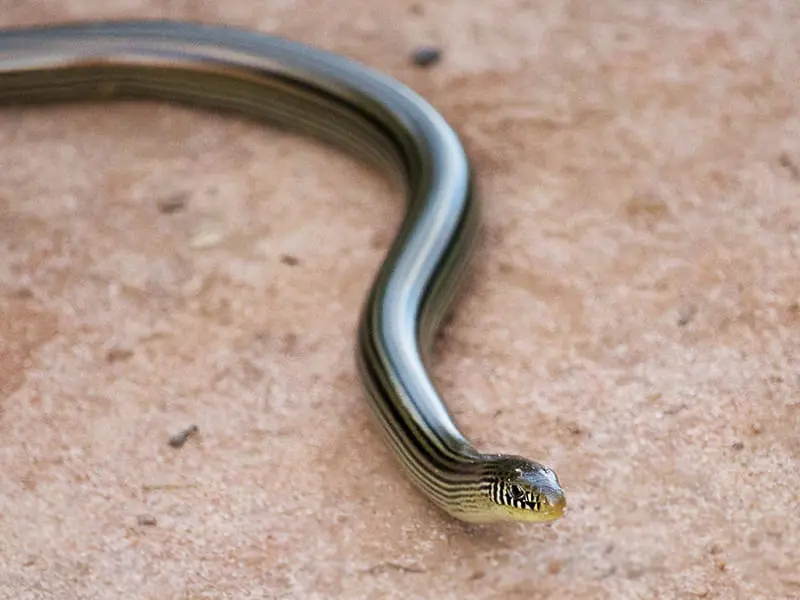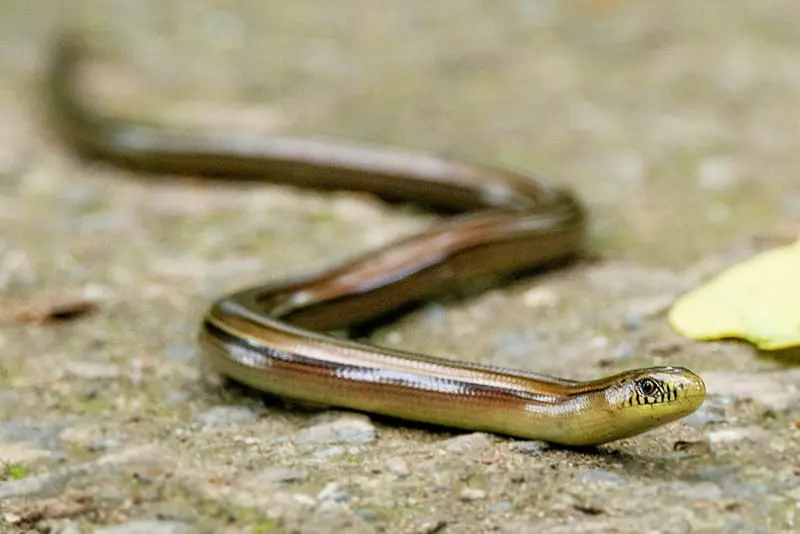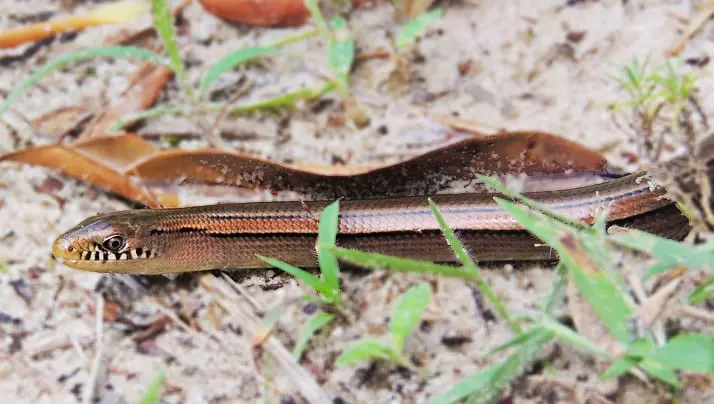Worm Lizards
Worm lizards are small, slender reptiles with shiny scales and beautiful horizontal stripe patterns that run all over the body and help distinguish species. Six are currently recognized in South America, of which three are found in Brazil:
- O. intermedius — Present in Paraguay, Uruguay, Bolivia, and Argentina.
- O. vertebralis — Present in Argentina and Uruguay.
- O. striatus — Present in Brazil. Besides Paraguay and Uruguay.
- O. fragilis — Present in southern Brazil from Mato Groso do Sul to Rio Grande do Sul. Besides part of Argentina and Paraguay.[^1]
- O. enso — Discovered in 2017 — Present only in Brazil in Rio Grande do Sul.[^2]
- O. luciae — Discovered in 2015 — Present in Paraguay.[^3]
Although they look very much like snakes, worm lizards are actually lizards. This can be seen by the fact that they have small, vestigial hind legs and that they have eyelids (lizards, unlike snakes, have eyelids and can blink).

Worm lizards or slow worms are part of the subfamily Anguidae. Within this subfamily, there are two very similar and often confused genera; the Anguis, of slow worms found in Europe; and the genus Ophiodes, with species more commonly called worm lizards, found in South America.
Despite their similarities, they belong to different genera, that is, they are different animals. It is estimated that these two lineages diverged about 22 million years ago, during the Miocene period.1 Therefore, they should not be confused.
Worm lizards have fossorial habits and usually live under the cover of fallen leaves on the ground or fallen logs. Although they have no functional legs, they can move quickly among the herbaceous vegetation where they live: mainly open fields, usually near aquatic environments.
They feed mainly on insects, larvae, slugs, arachnids, and other small arthropods.
How did they lose their legs?

The transition from lizard to snake form is relatively common in reptiles. In addition to snakes, several lizard families, such as the amphisbaenians, have undergone this process.
Previously, it was thought that the loss of limbs was related to their habit of living in small underground tunnels where their legs might not be as useful. However, a 2007 study revealed that limb reduction is actually associated with body elongation. That is, reptiles with very long bodies and tails tend to develop reduced limbs1.
In this case, worm lizards can reach 40 to 50 cm (15 to 19 in), with the tail often being longer than the body itself.
Self-amputation

In Brazil, the worm lizard is called “cobra de vidro”, which means glass snake. In addition to being legless, some people believe the name “glass lizard” refers to the shiny scales of these animals, while others believe it refers to the ease with which they self-amputate their tails when captured. This technique, also called autotomy, increases the chances of survival by distracting the predator with the lizard’s loose (and still moving) tail while the lizard escapes.
Autotomy is common among lizards - of the 20 or so families, 13 are capable of it. However, the tail plays an important role in locomotion, social and sexual interactions, and energy storage, so it is too valuable an organ to be cut off indiscriminately.
Therefore, one of the most important steps after autotomy and a successful escape is the regeneration of the lost tail, without which the caudal autotomy could not be used again. However, repair and regeneration require a large investment in energy replacement.
Thus, although autotomy increases the animal’s chances of survival, in many lizard species it comes at a cost: loss of caudal fat reserves; decline in social status and reproductive chances; reduction in growth, locomotor and signaling abilities; higher mortality rates, among others.
How much each of these costs affects a lizard’s life varies between species, and it is still unclear how this affects worm lizards2.
After a few weeks, a new tail is formed that is different from the previous one: usually, new tails are shorter, with a slightly different color and texture than the original tail. The main difference, however, is that the new tails are made of cartilage rather than vertebrae, which reduces their mobility.
Conservation and Threats

Worm lizards are still very poorly known, and their population numbers are unknown. Some species such asO. enso and O. luciae have only been found in microhabitats, and their presence elsewhere is not known. Therefore, any changes in the environments used by these species are relevant threats to the conservation of their populations, and could decimate them.
However, it is estimated that well distributed species such as O. striatus are abundant and at little risk of extinction, being cited as “Low Concern” in the Red List of the International Union for Conservation of Nature (IUCN). However, their numbers are equally unknown.
Learning to distinguish between worm lizards and real snakes is an important way to help protect these animals. After all, worm lizards are completely harmless and cause no harm or concern to humans, so any defensive action against them is unnecessary. In fact, worm lizards help control animals that may be undesirable in certain areas, such as spiders, insects, and snails.
Read more:
